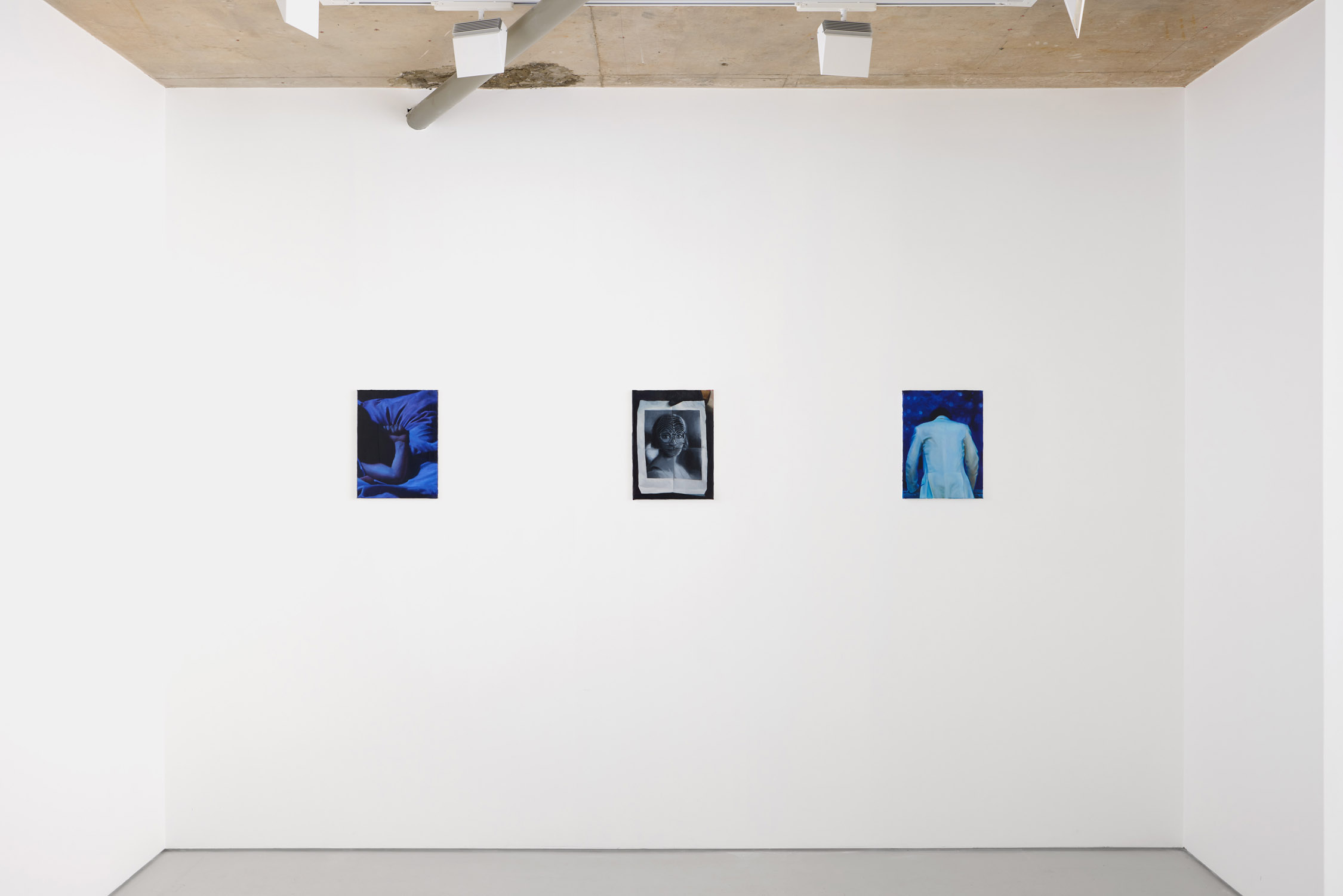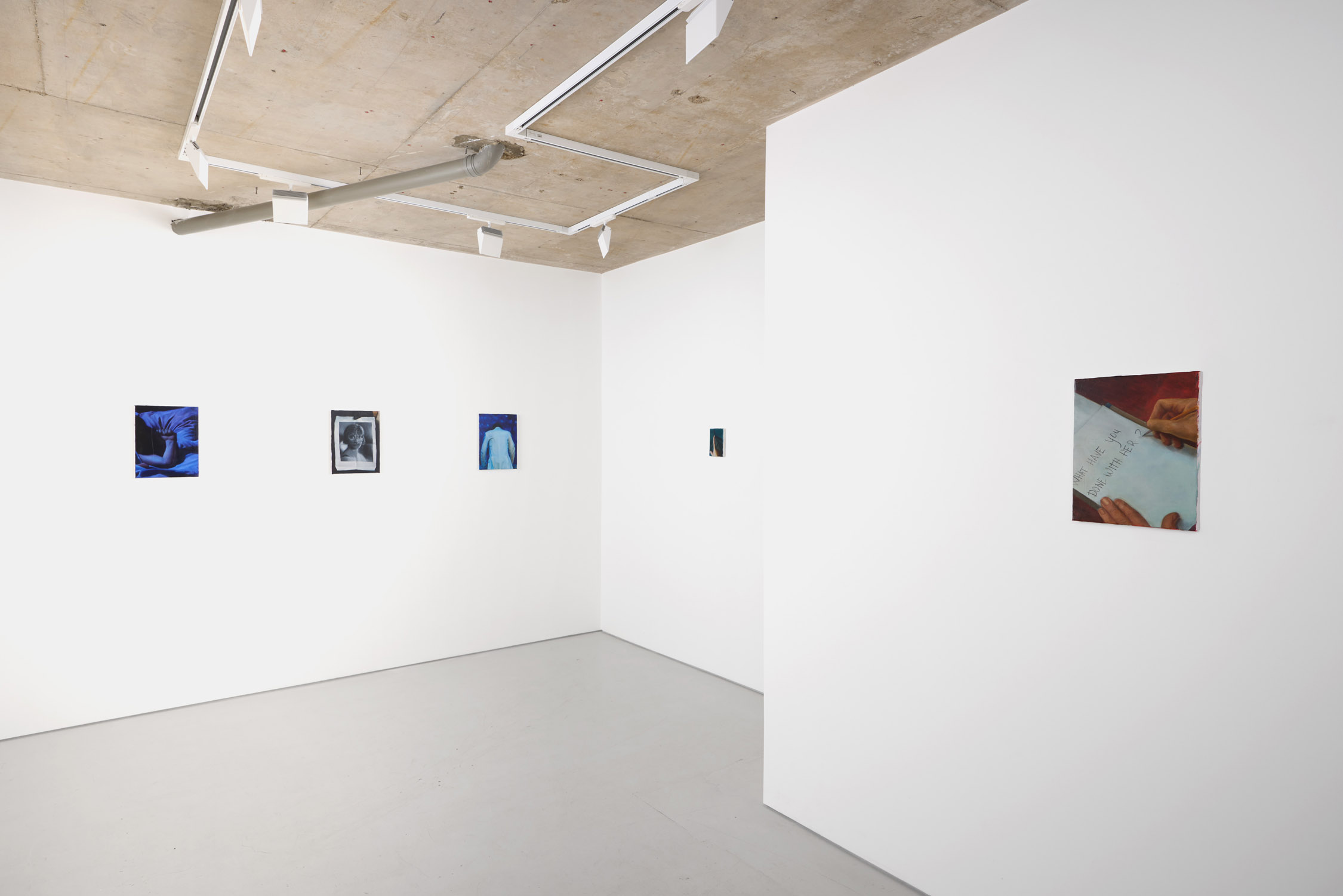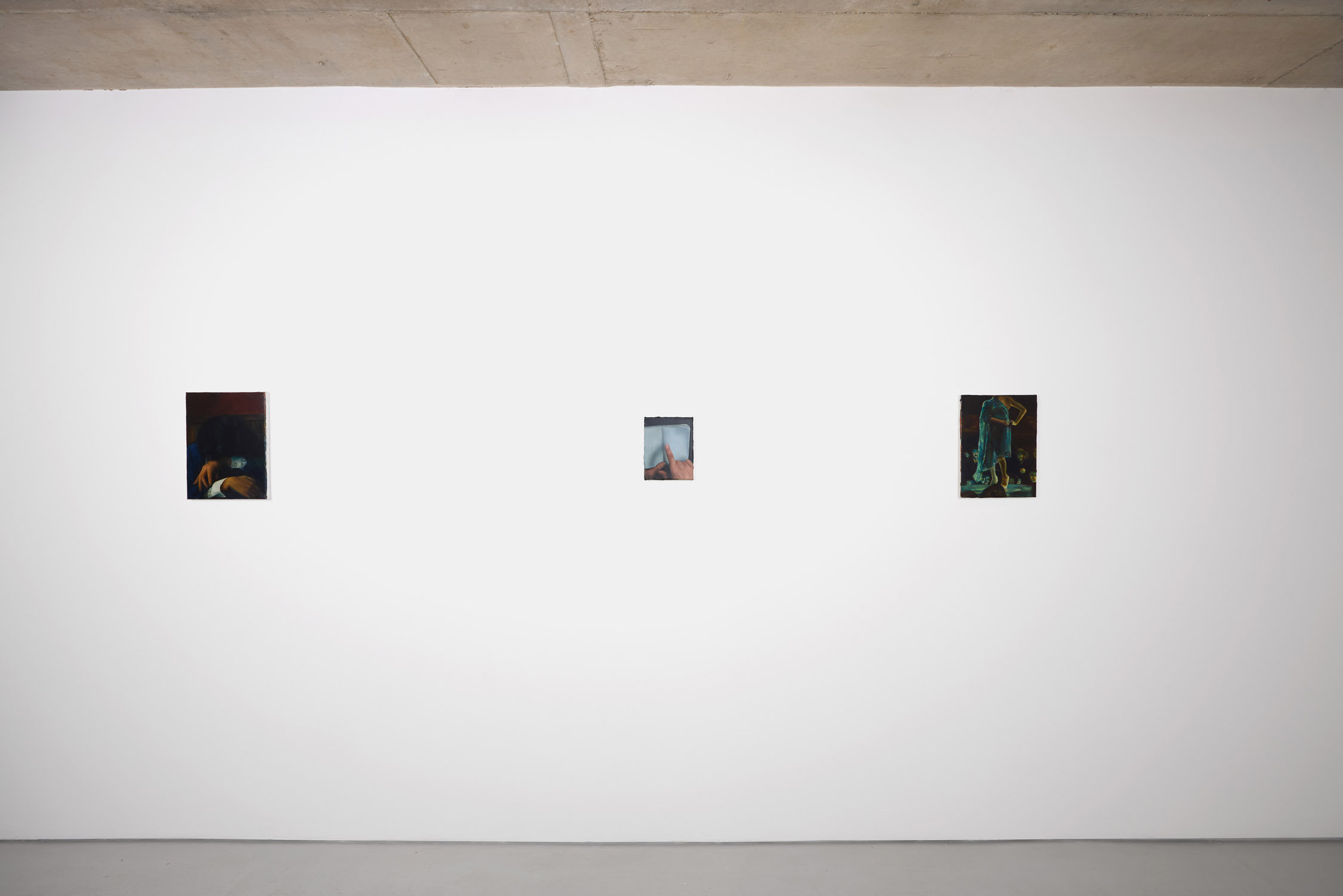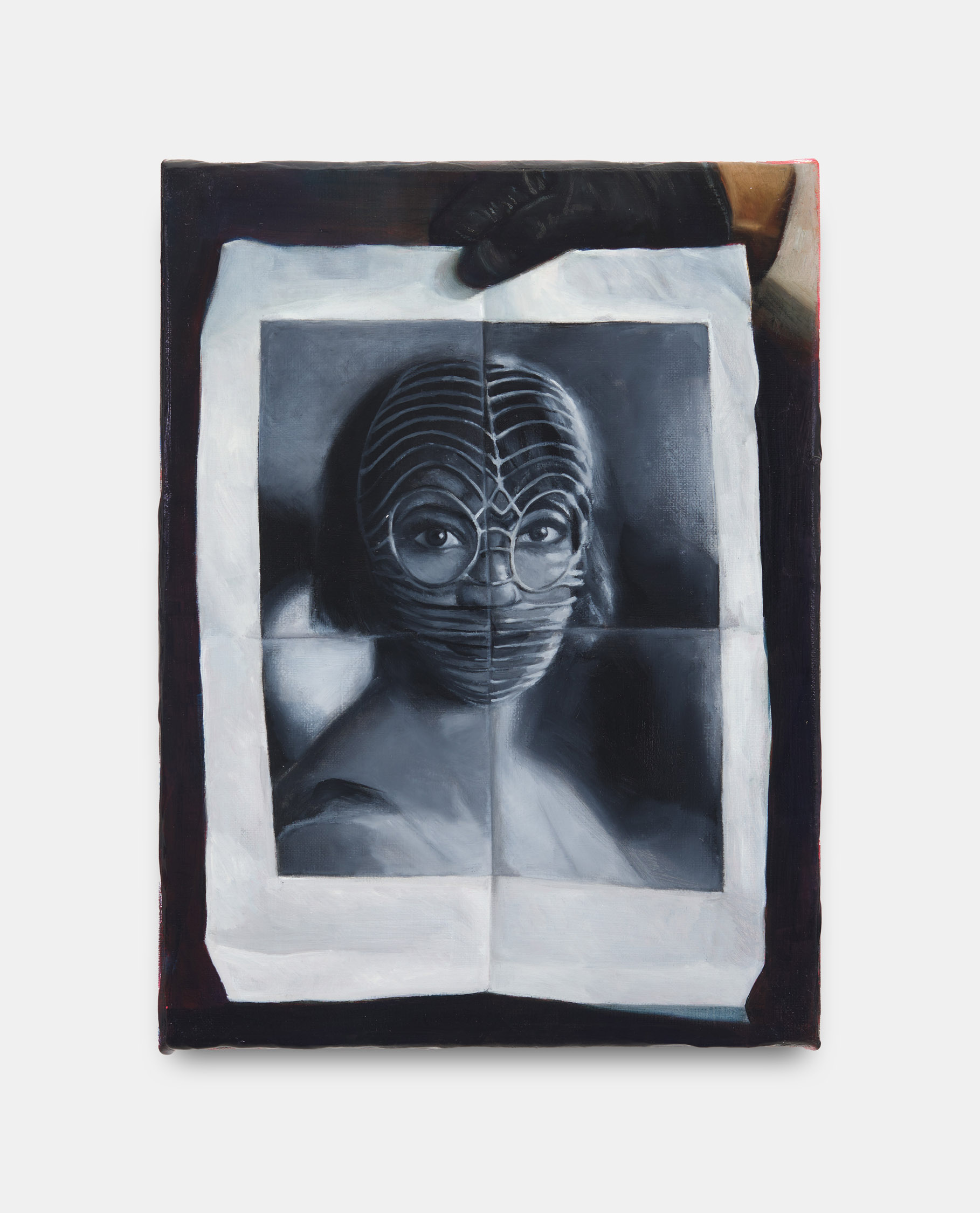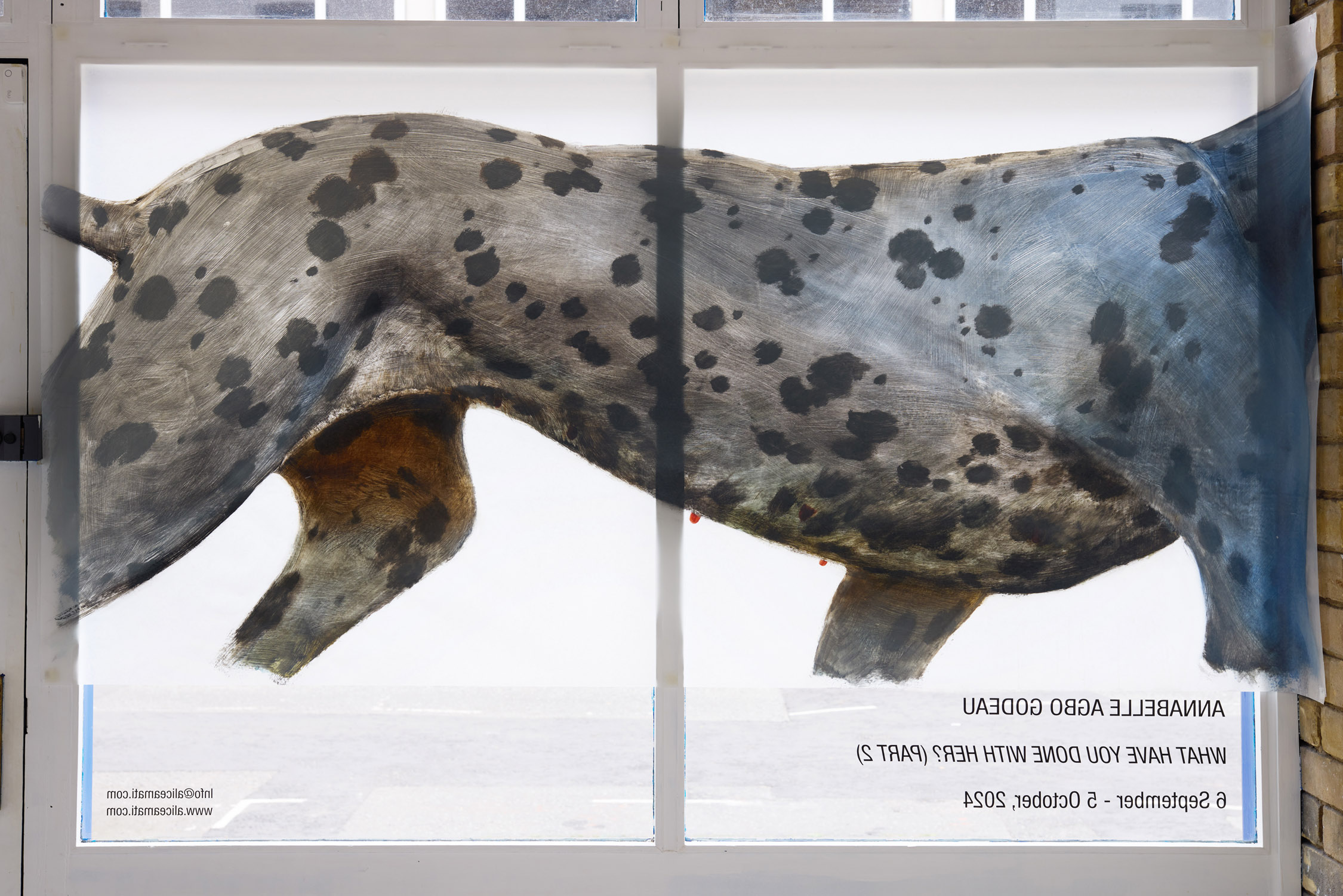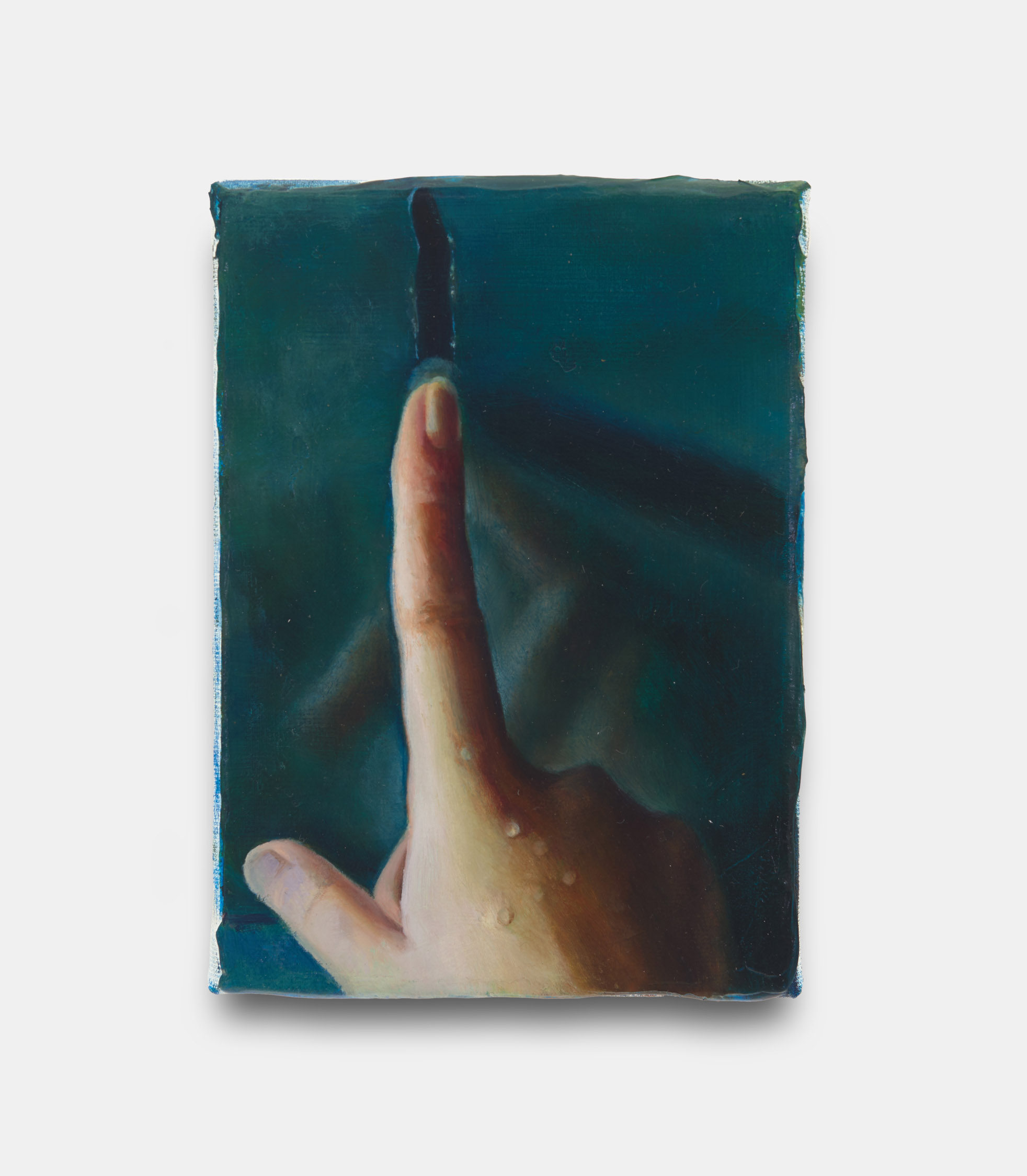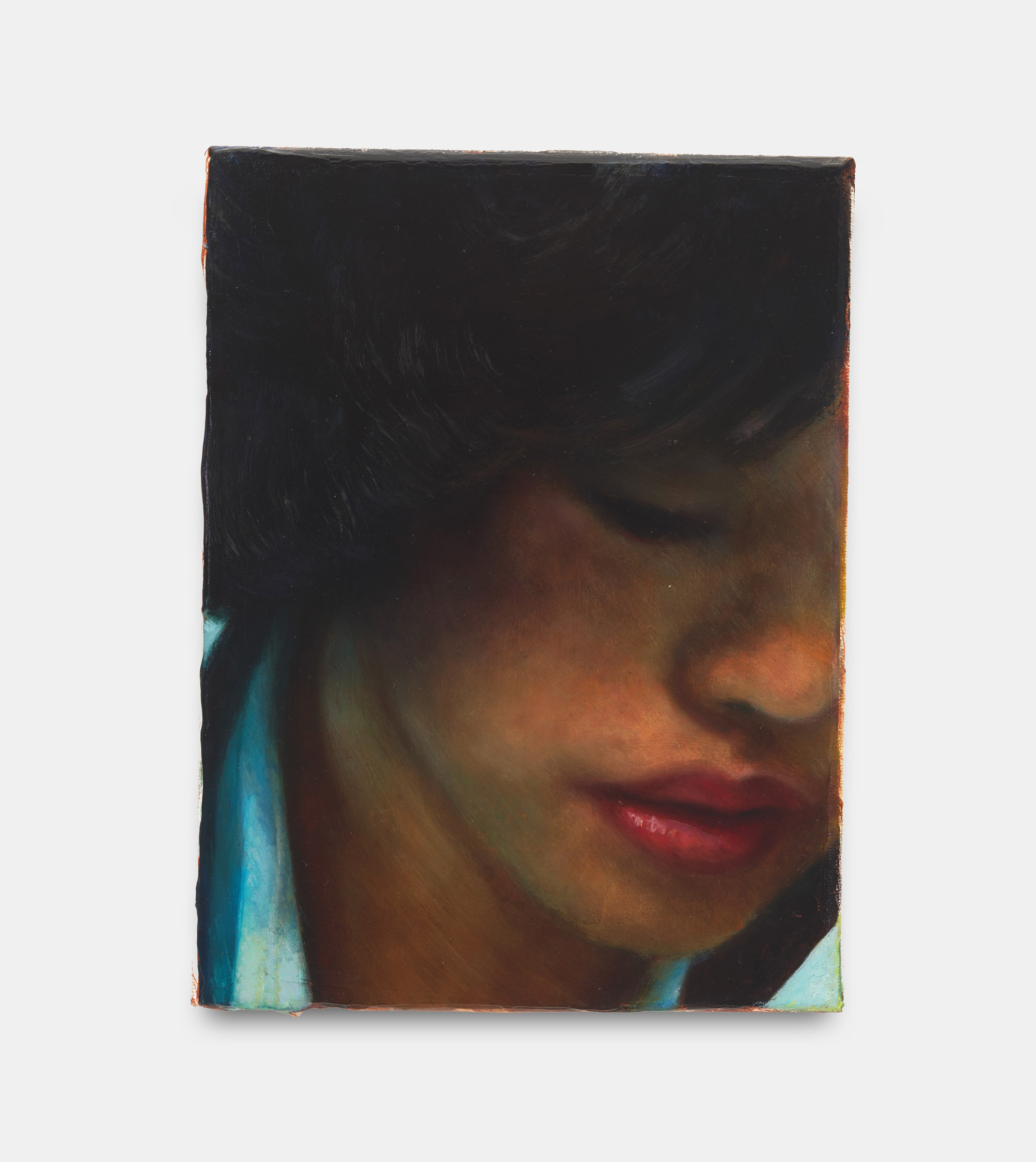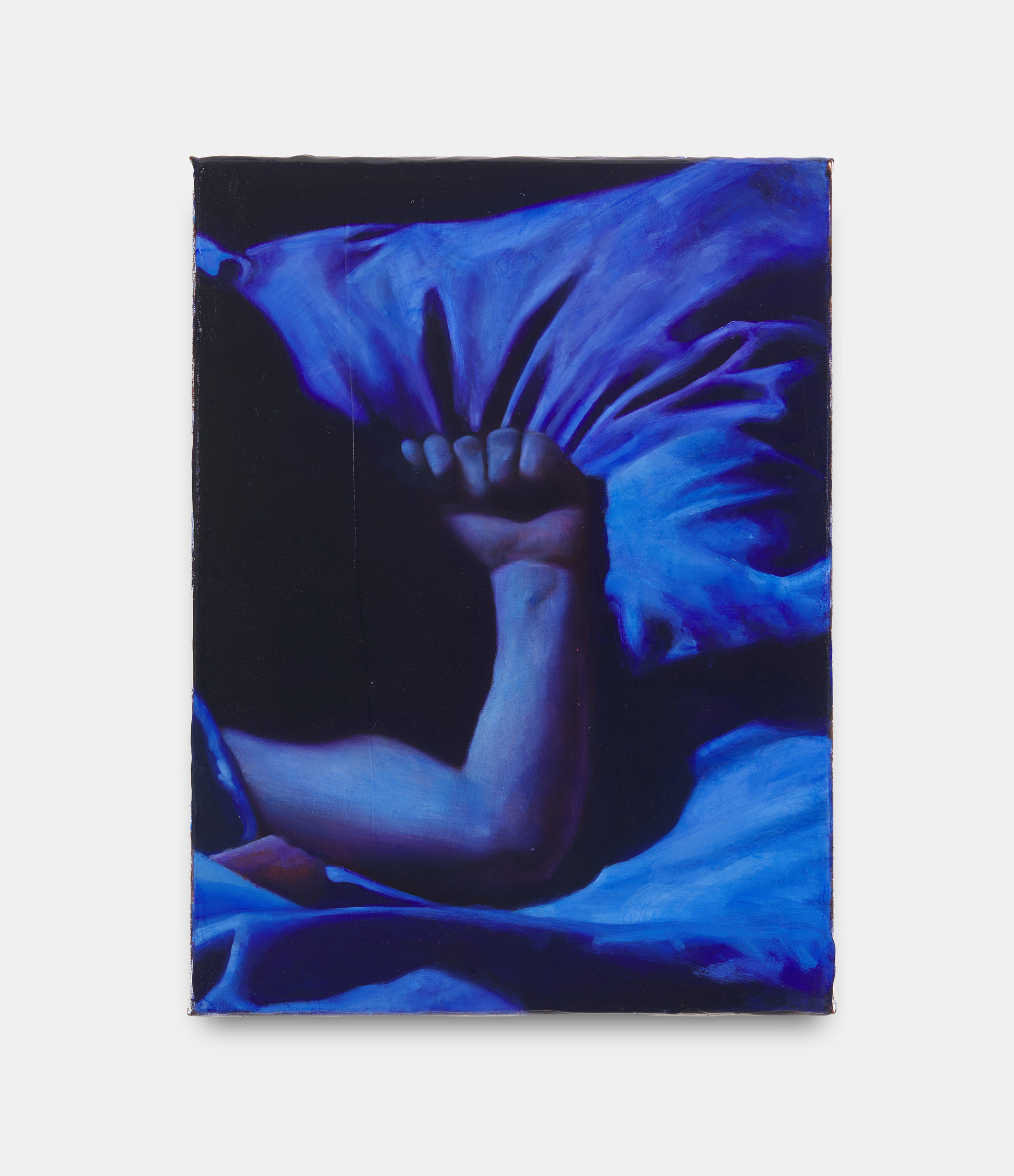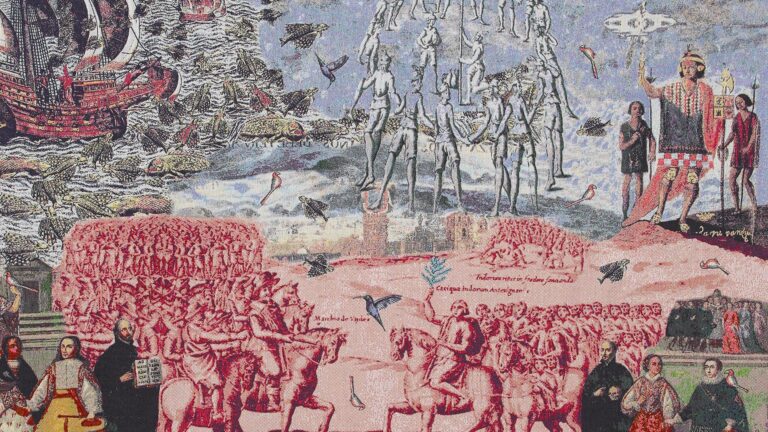Alice Amati is delighted to announce the first UK solo exhibition of paintings by French artist Annabelle Agbo Godeau, opening with a private view on the 5th of September, and running until the 5th of October, 2024.
In the 2024 painting Dainah, 29-year-old Düsseldorf-based artist Annabelle Agbo Godeau depicts a pivotal moment in the 1932 French drama ‘Dainah La Métisse’ (Dainah The Mulatto). Dainah, a young mixed-race dancer (played by the little-known actress Laurence Clavius), captures the attention of passengers on a luxury ship dressed in a distinctive fitted wire headdress, which New York Times critic Mike Hale wrote contrasts with the “flabby porcine masks” worn by the “jaded, gossiping white passengers.”1 In the film, Dainah works on the ocean liner alongside her magician husband. But after her elegant moves and flirtatious personality catches the eye of a ship engineer and sparks jealousy in her partner, she disappears, putting both men under suspicion of murder.
‘Dainah La Métisse’ serves as the jumping-off point for the body of work in Agbo Godeau’s solo show, What Have You Done with Her? (Part 2), which follows a longstanding interest of the French-born artist in drawing from film and photography in her oeuvre to explore questions around identity. For Agbo Godeau, Clavius, who plays Dainah, is one of the few actresses she has seen on screen who she feels physically resembles her. Yet, when she went on to research the actress, a sparse amount came up outside of the 1932 film. According to Agbo Godeau, Dainah’s downfall also conforms to the “tragic mulatto” trope in storylines from the 19th to 20th century where a mixed-raced person—known as a ‘mulatto’ or sometimes ‘mulatta’ for women at the time— met a catastrophic demise usually as a result of their race. “They were troubled people, and their characters didn’t fare well,” Agbo Godeau says. “I found that very interesting because what is that supposed to mean?” With a mixed mother (of West African and German heritage) and a white French father, Agbo Godeau’s work serves as a catalyst for exploring this question while also being used as an opportunity to consider her own racial ambiguity.
In many of the portraits in Agbo Godeau’s work for the show, her subject’s face is partially hidden either by a compositional crop, the way the subject is posed or by playing with light and colour. In Taipei, for example, a woman rests her head on her arms, her flowing dark hair and strategically placed hands covering her face, almost as if hiding from the viewer. In the blue-toned Willow, only the subject’s arm and the bed they lay on are discernable. Such paintings probe what it means not to be fully seen and deprive the viewer of the power to judge the subject based on their physical appearance, gesturing towards how others treat Agbo Godea based on her perceived race at a given time.
However, a number of Agbo Godeau’s works also shift from directly referencing cinematic moments to using other forms of figuration as a means of further exploring questions around race. In Guess who!, Agbo Godeau presents us with a disguise kit, an overt nod to the idea of hiding oneself from the gaze of others. In The dancer, she paints a skeleton, with each bone depicted on a separate piece of transparent waxed paper to create an almost hanging sculpture in a style reminiscent of Danse Macabre (Dance of Death), an artistic genre from the Late Middle Ages of dancing skeletons. At the time of the Danse Macabre trend, these playful corpses often referenced the power of death in equalising all humans regardless of their social standing, which feels pertinent to Agbo Godeau’s subject matter for What Have You Done with Her? (Part 2).
In the show, Agbo Godeau searches for a “missing history” by exploring little-known films featuring women who share a mixed race heritage. Though she purposefully does not offer any answers to the topics she sets out to investigate, through her paintings, she allows herself to consider her place in the world while also encouraging viewers to think about how they see themselves and the people around them, taking into account the sort of stories that may have informed those opinions.
-Text by Precious Adesina
[1] New York Times (Online) (2014) ‘Romantic Passion With a Whiff of Ambiguity’.
ABOUT THE ARTIST
Annabelle Agbo Godeau (b. 1995, Paris, FR) lives and works between Düsseldorf and Paris. She holds an MFA from the Academie de Beaux-Arts de Paris (2018) and was a guest student of Ellen Gallagher at the Kunstakademie Düsseldorf, Düsseldorf until 2021. Recent solo exhibitions include: I won‘t dance, don‘t ask me, The island club, Limassol, CY (2023); Too good to be true, JVDW, Düsseldorf, DE (2022) La théorie du cygne noir, La cuisine, Galerie Hussenot, Paris, FR (2022); Die eiserne Hand, Galerie Alexandra Romy, Zurich, CH (2021), amongst others. Her work has been included in group exhibitions internationally at Kunstverein Düsseldorf (2024); Galerie Peter Kilchmann, Paris, FR (2023); Pal Project, Paris, FR (2022); Museum Dhondt-Dhaenens, Deurle, BE (2022); Museum Haus-Opherdicke, Holzwickede, DE (2022); The Bass Museum, Miami, US (2022); Revelations Emerige, Paris, FR (2021). She received the Roger Bataille Painting Prize in 2019 and is one of the recipients of the 2024-2025 dHCS studio fellowships at Mataré-Haus in Meerbusch.
ABOUT THE GALLERY
Alice Amati is a contemporary art gallery established in Fitzrovia in June 2023. The gallery is committed to fostering artists at the early stages of their career by often providing the opportunity for their first solo show in the city and a supportive context for artistic explorations and career development. Concerned with encouraging transnational dialogues around topical questions within society and art, Alice Amati brings together British and International artists through a challenging, experimental and rigorous exhibitions programme. Joining a cohort of young and established galleries in the burgeoning artistic scene of Fitzrovia, Alice Amati operates as a platform for new voices in the contemporary global artistic scene with a strong commitment to research, collaboration and diverse practices.


